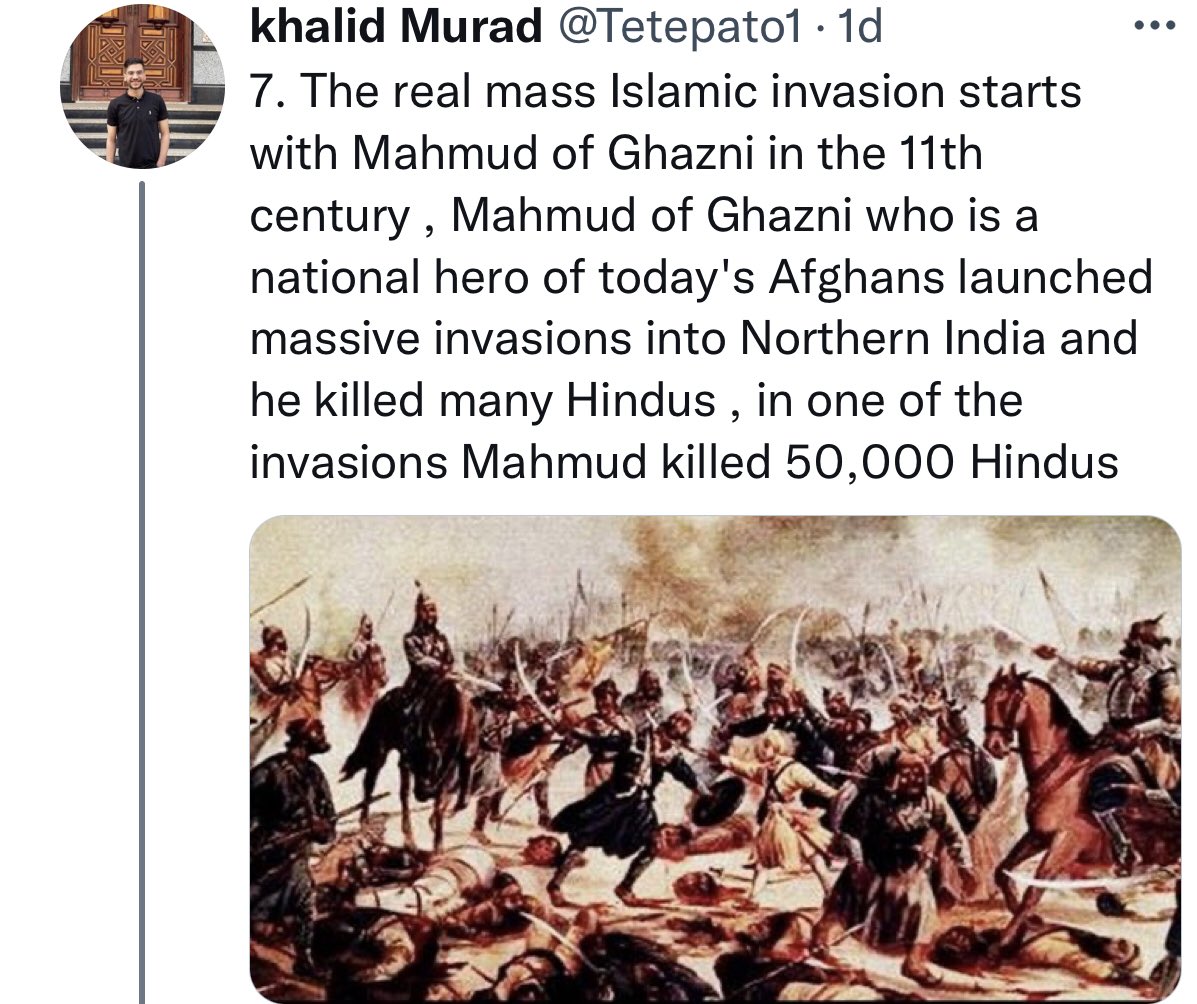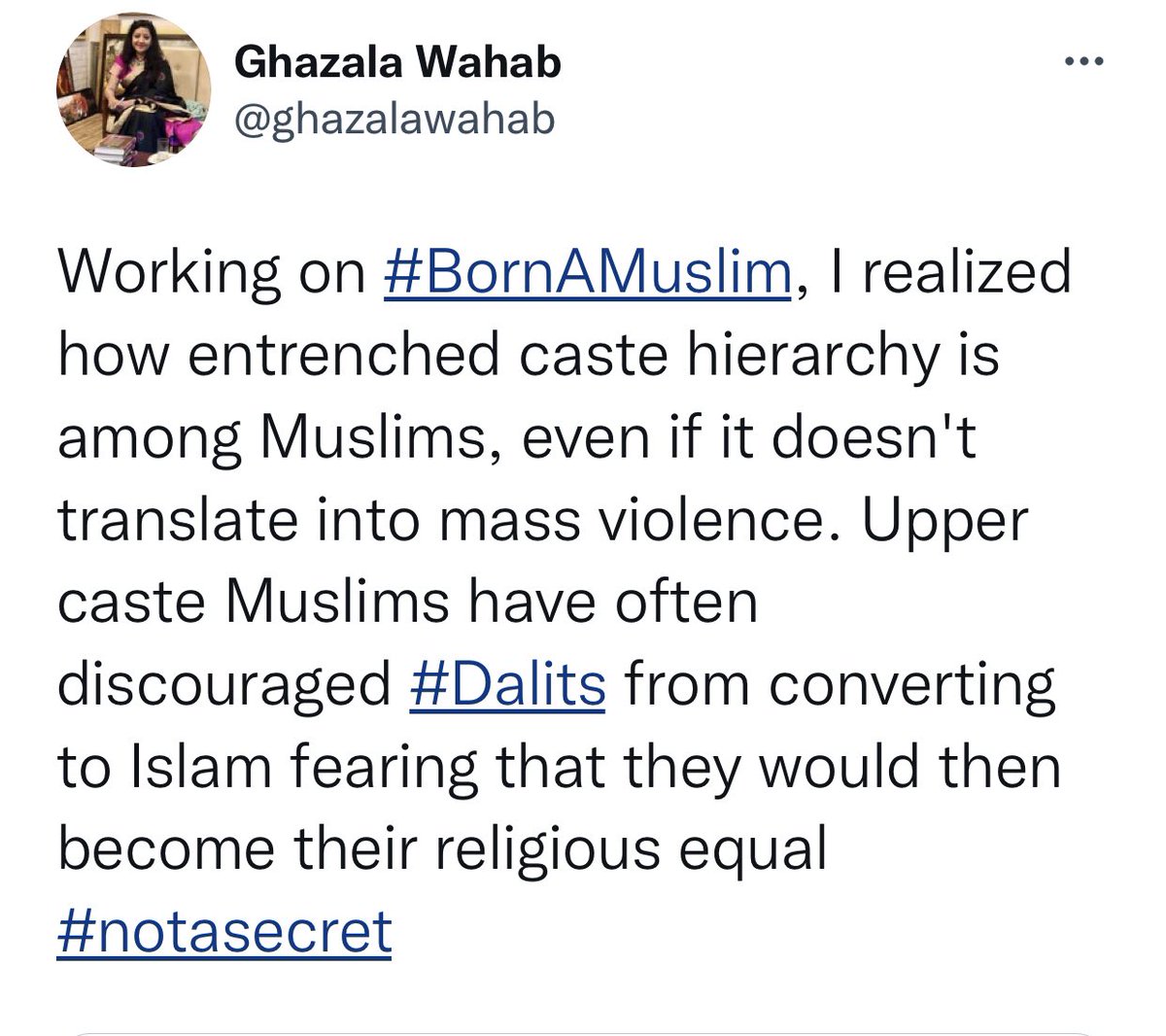In the post-truth age, when the study of history faces stiff competition from a reckless #Mythistory, and facts are not even referred to, students and scholars must counter this trend more strongly than before.
“Islamic invasion of India, The Biggest Hoax in History”.
A thread.
“Islamic invasion of India, The Biggest Hoax in History”.
A thread.

The Indian sub-continent faced multiple invasions and incursions since recorded history began - likely before as well. Aryans, Huns, Scythians, Bactrians, Greeks, Kushans et alia, all made their way into what now encapsulates the geographical boundaries of India, over millenia. 



As such, there is no singular event, episode or arrival that may be defined as “The Islamic Invasion of India”, in historical terms. From at least the 13th century onwards, military competition for political domination was primarily between Islamicate dispensations themselves. 

The author of this thread makes the following claims about Sindh without references to any primary sources. Furthermore, claims about the Umayyads making non-Arabs pay Jiziya are also hollow, and make no reference to the Rida’ah wars, whose basis was not at all Arab supremacy! 





In fact, the first encounters between Islam and Buddhism in Sindh were not overtly hostile, at all. The Arabs merely intervened in an ongoing struggle for supremacy between Hindu cliques and a Buddhist dispensation facing decline due to its power struggle with Hinduism. 



For an excellent introduction to Islam’s early interactions with #Buddhism; rarely a hostile exchange, do listen to this excellent podcast. The truth is more nuanced and less studied than the hype.
m.soundcloud.com/tricyclemag/jo…
m.soundcloud.com/tricyclemag/jo…
The advent of Islam in the north of the Indian Sub-continent is properly dated to 712 AD, through the conquest of #Sindh by the 17 year old Arab general, Mohammad bin Qasim. His army and followers numbering some 15,000 (largely Arab) individuals, established a colony in Multan…
…which, from all accounts became an isolated but largely peaceful outpost of a global Islamic empire that overwhelmed the West, as far as Spain.
Even the mildly Islamophobic Orientalist, Stanley Lane-Poole concedes the Arab administration of Sindh was tolerant and conciliatory.

Even the mildly Islamophobic Orientalist, Stanley Lane-Poole concedes the Arab administration of Sindh was tolerant and conciliatory.


The numbers bandied by Hindutva historians defy historical reality, make no reference to sources, ignore population studies, genetics and above all logic. The figure of 2 million plus humans being killed/enslaved in the remote tracts of Ghazni’s advance is not only absurd, it… 



…is wholly illogical.
Mahmud Ghaznawi issued coins for his subjects, in Arabic and Sanskrit that read:
"avyaktameka muhammada avatar nripati mahamuda."
“The Invisible is One, Muhammad is the manifestation, Mahmud the king.” @IndiaArtHistory
Not the work of a genocidal maniac!
Mahmud Ghaznawi issued coins for his subjects, in Arabic and Sanskrit that read:
"avyaktameka muhammada avatar nripati mahamuda."
“The Invisible is One, Muhammad is the manifestation, Mahmud the king.” @IndiaArtHistory
Not the work of a genocidal maniac!

Apart from getting the date wrong, by a decade (Timur arrived at the gates of Delhi in 1398), the fantastical figure of 750,000 killed/enslaved has no basis in any facts. Delhi was in any case a Tughlaq seat and neither Yazdi, Ferishta nor Khwandamir give specific figures. 

@justinmarozzi, a biographer of Timur describes accounts of Timur’s massacre of Delhi as “suspect”, in his book “Tamerlane: Sword of Islam, Conqueror of the World”. Exaggerations and fabrications cannot substitute real-history, based on facts. 

Even more absurd and illogical is the figure of “60 to 80” million casualties, “as a result of Islamic invasions between 1000-1525”, given that 100 million was the likely estimated population of the whole of India, in the 16th century!
These figures are simply perverse.
These figures are simply perverse.
As if that was not enough, the author makes the claim that “70-90 million Hindus died” between the 11th-17th century, ie. 10-20 million died in the 100 years between the 16th-17th century, according to his preceding figure! And for Aurangzeb (RA) to have killed off 4.6 million… 

…in his 50 year reign, “for not converting” is laughable! This means he killed an average of 95,000/year for simply not converting; in other words nearly 4% of the population of the Indian sub-continent! Perhaps this gives you some idea of the scale of nonsense being propagated!
And finally, coming to the oft-repeated quote by Will Durant, please examine the attached thread below, before falling for this selective line. This should allow some perspective, hopefully.
https://twitter.com/yusufpore/status/1548672195530223616
• • •
Missing some Tweet in this thread? You can try to
force a refresh














